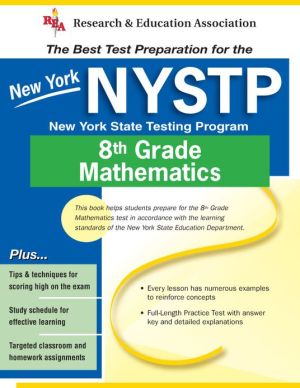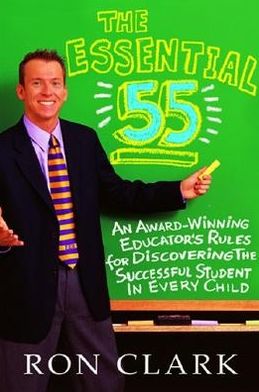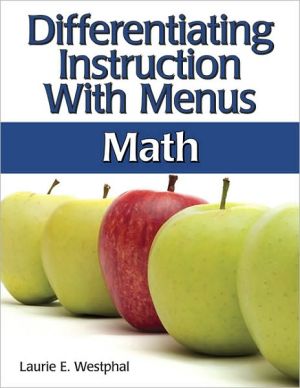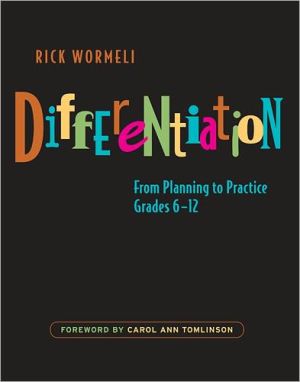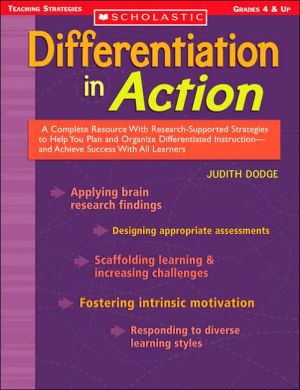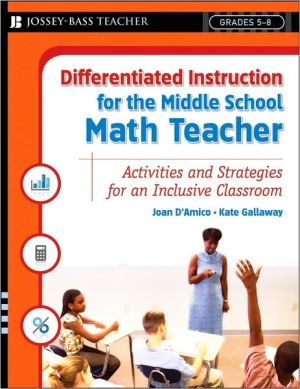New York NYSTP (REA) - the Best Test Prep for 8th Grade Math
REA Real review, Real practice, Real results.\ \ REA's New York Grade 8 Math Test Prep!\ Fully aligned New York’s Core Curriculum Standards\ \ Are you prepared to excel on this state high-stakes assessment exam? \ * Take the diagnostic Pretest and find out what you know and what you should know\ * Use REA's advice and tips to ready yourself for proper study and practice\ \ Sharpen your knowledge and skills\ * The book's full subject review...
Search in google:
Score high and succeed on the New York NYSTP Grade 8 mathematics exam! REA gets students ready for exam day! Our all-new test prep for the NYSTP provides all the instruction and practice students need to pass and excel on this important state-required math exam. The book's comprehensive math review features numerous examples, diagrams, and charts that illustrate and reinforce key math lessons. Use the book's diagnostic tests to pinpoint the areas where your students need to invest more time and practice. REA's test prep also features one full-length practice NYSTP exam so you can familiarize yourself with the content and format of the actual NYSTP exam. Each practice exam question is fully explained to help reinforce important math concepts. You can prepare even more for exam day by following REA's proven test-taking techniques, powerhouse drills and targeted homework assignments.
PASSING THE NYSTP GRADE 8 MATHEMATICS TEST\ ABOUT THIS BOOK\ Our book provides excellent preparation for the NYSTP Grade 8 Mathematics Test. Inside you will find reviews that are designed to provide you with the information and strategies needed to do well on this exam, which is part of the New York State Testing Program, or NYSTP. We also provide a full-length practice test, so you can get a good idea of what you'll be facing on test day. Detailed explanations follow the practice test. If you are having a problem with a certain question, we'll tell you how to solve it.\ Our Teacher's Answer Guide contains full explanations to the "Class and Homework Assignment" questions in the diagnostic tests at the back of this book. Teachers may obtain the answer guide by contacting REA.\ ABOUT THE TEST\ New York state's eighth grade assessment is designed to determine how well a student is advancing and whether the student is on track to perform well on high school assessments. It is one of the key tools used to identify students who need additional instruction to master the knowledge and skills as set forth by the state of New York.\ Students are given 70 minutes to complete each of the NYSTP Grade 8 Mathematics Test's two sessions, so total testing time comes to 2 hours and 20 minutes.\ Test Book 1 features multiple-choice questions while Test Book 2 comprises open-ended questions. Students are provided with a punch-out tools (manipulatives) sheet containing a ruler and protractor. These tools may be used to help in solving any of the test questions. The questions are designed to test student mastery of these seven key ideas for Grade 8 mathematics:\ 1. Mathematical Reasoning\ 2. Number and Numerations\ 3. Operations\ 4. Modeling/Multiple Representation\ 5. Measurement\ 6. Uncertainty\ 7. Patterns/Functions\ For comprehensive official information on the NYSTP Grade 8 Mathematics Test, visit the New York State Education Department online at http://www.emsc.nysed.gov.\ HOW TO USE THIS BOOK\ What do I study first?\ Read over the reviews and the suggestions for test-taking. Studying the reviews thoroughly will reinforce the basic skills you will need to do well on the test. Our practice drills and classroom and homework assignments feature five answer choices, whereas the actual exam has only four choices. This four-choice format is accurately reflected in our practice test, which you'll find in the back of this book.\ To best utilize your study time, follow the "Independent Study Schedule" located in the front of this book. Brushing up on the areas you did well on wouldn't hurt either.\ When should I start studying?\ It is never too early to start studying for the exam. The earlier you begin, the more time you will have to sharpen your skills. Do not procrastinate! Cramming is not an effective way to study, since it does not allow you the time needed to learn the test material. The sooner you learn the format of the exam, the more time you will have to familiarize yourself with the exam content.\ ABOUT THE REVIEW SECTIONS\ The reviews in this book are designed to help you sharpen the basic skills needed to approach the exam, as well as to provide strategies for attacking each type of question. You will also find exercises to reinforce what you have learned. By using the reviews in conjunction with the drills and practice test, you will put yourself in a position to master the exam.\ TEST-TAKING TIPS\ Although you may not be familiar with standardized tests, there are many ways to acquaint yourself with this type of examination and help alleviate your test-taking anxieties. Here are some tips to bear in mind:\ Become comfortable with the format. When you are practicing, simulate the conditions under which you will be taking the actual test. Stay calm and pace yourself. After simulating the test only a couple of times, you will boost your chances of doing well, and you will be able to sit down for the actual exam with much more confidence.\ Read all of the possible answers. Just because you think you have found the correct response, do not automatically assume that it is the best answer. Read through each choice to be sure that you are not making a mistake by jumping to conclusions.\ Use the process of elimination. Go through each answer to a question and eliminate as many of the answer choices as possible. By eliminating two answer choices, you can vastly improve your chances of getting the item correct, since there will only be two or three choices left from which to make your guess. It is recommended that you attempt to answer each question, since your score is calculated based on how many questions you get right, and unanswered or incorrectly answered questions receive no credit.\ Work quickly and steadily. Work quickly and steadily to avoid focusing on any one problem for too long. Taking the practice test in this book will help you learn to budget your precious time.\ Learn the directions and format for the test. Familiarizing yourself with the directions and format of the test will not only save time, but will also help you avoid anxiety (and the mistakes caused by getting anxious).\ Work on the easier questions first. If you find yourself working too long on one question, make a mark next to it on your test booklet and continue. After you have answered all of the questions that you can, go back to the ones you have skipped.\ Be sure that the answer you are marking corresponds to the number of the question in the test booklet. Since the multiple-choice sections may be graded by machine, marking one wrong answer can throw off your answer key and your score. Be extremely careful.\ Eliminate obvious wrong answers. Sometimes a question will have one or two answer choices that are a little odd. These answers will be obviously wrong for one of several reasons: they may be impossible given the conditions of the problem, they may violate mathematical rules or principles, or they may be illogical. Being able to spot obvious wrong answers before you finish a problem gives you an advantage because you will be able to make a more educated guess from the remaining choices even if you are unable to fully solve the problem.\ Work from answer choices. One of the ways you can use a multiple-choice format to your advantage is to work backwards from the answer choices to solve a problem. This is not a strategy you can use all of the time, but it can be helpful if you can just plug the choices into a given statement or equation. The answer choices can often narrow the scope of responses. You may be able to make an educated guess based on eliminating choices that you know do not fit into the problem.\ THE DAY OF THE TEST\ Before the Test\ On the day of the test, you should wake up early (it is hoped after a decent night's rest) and have a good breakfast. Make sure to dress comfortably, so that you are not distracted by being too hot or too cold while taking the test. Also plan to arrive at school early. This will allow you to collect your thoughts and relax before the test, and will also spare you the anguish that comes with being late.\ During the Test\ Follow all of the rules and instructions given by your teacher or test supervisor.\ When all of the test materials have been passed out, you will receive directions for filling out your answer folder. You must fill out this sheet carefully since this information will be printed on your score report. Fill out your name exactly as it appears on your identification documents, unless otherwise instructed.\ You can write in your test booklet or on the scratch paper, which will be provided. However, you must be sure to mark your answers in the appropriate spaces in the answer folder. Each numbered row will contain four ovals corresponding to each answer choice for that question. Fill in the oval that corresponds to your answer darkly, completely, and neatly. You can change your answer, but be sure to completely erase your old answer. Only one answer should be marked. This is very important, as your answer sheet may be machine-scored and stray lines or unnecessary marks may cause the machine to score your answers incorrectly.\ After the Test\ Once your test materials have been collected, you will be dismissed. Then, go home and relax - you deserve it! Your score report will arrive in the time indicated to you.
TABLE OF CONTENTS About Our Editors About Research & Education Association PASSING THE NYSTP IN MATHEMATICS About this Book About the Test How to Use this Book About the Review Sections Test-Taking Tips The Day of the Test ARITHMETIC REVIEW Integers and Real Numbers Absolute Value Positive and Negative Numbers Order of Operations Drill: Integers and Real Numbers Fractions Operations With Fractions Drill: Fractions Decimals Operations With Decimals Drill: Decimals Ratio and Proportion Ratio Proportion Percentages Equivalent Forms of a Number Drill: Percentages Radicals Operations With Radicals Drill: Radicals Exponents General Laws of Exponents Power to a Power Drill: Exponents Scientific Notation Averages Mean Median Mode Drill: Averages Estimation Significant Digits Money Notation Counting and Sorting Game Strategies Networks Algorithms Flow Charts More Estimation Arithmetic Drills Answer Key ALGEBRA REVIEW Operations With Polynomials Drill: Operations With Polynomials Simplifying Algebraic Expressions Commutative Laws (Addition, Multiplication) Associative Laws (Addition, Multiplication) Distributive Law Drill: Simplifying Algebraic Expressions Equations Linear Equations Drill: Linear Equations Two Linear Equations Drill: Two Linear Equations Quadratic Equations Drill: Quadratic Equations Absolute Value Equations Drill: Absolute Value Equations Inequalities Properties of Inequalities Drill: Inequalities Ratios and Proportions Drill: Ratios and Proportions Permutation, Combination, and Probability Trees Iteration Recursion Growth Algebra Drills Answer Key GEOMETRY REVIEW Points, Lines, and Angles Intersection Lines and Angles Types of Angles Perpendicular Lines Parallel Lines Drill: Lines and Angles Polygons (Convex) Drill: Regular Polygons Triangles Drill: Triangles Change in Linear Direction The Pythagorean Theorem Quadrilaterals Parallelograms Rectangles Rhombi Squares Trapezoids Drill: Quadrilaterals Circles Drill: Circles Solids Rectangular Solids Drill: Solids Perimeters, Areas, Volumes Coordinate Geometry, Plotting, and Graphing Drill: Coordinate Geometry Fractals Geometry Drills Answer Key WORD REVIEW PROBLEMS Algebraic Drill: Algebraic Rate Drill: Rate Work Drill: Work Mixture Drill: Mixture Interest Drill: Interest Discount Drill: Discount Profit Drill: Profit Sets Drill: Sets Geometry Drill: Geometry Measurement Drill: Measurement Data Interpretation Drill: Data Interpretation Scaled Drawings Problems with Missing or Misleading Information Making Inferences Word Problem Drills Answer Key QUANTITATIVE ABILITY Quantitative Comparison Discrete Quantitative SPATIAL SENSE RELATIONSHIPS Drill: Spatial Sense/Relationships Spatial Sense/Relationships Drill Answer Key STATISTICS What is Statistics? Variables Functions Data Description: Graphs Frequency Distributions Frequency Histograms and Relative Frequency Histograms Cumulative Frequency Distributions Types of Frequency Curves Deductive and Inductive Reasoning Sampling Statistical Plots and GraphsDiagnostic Tests For Class and Homework Assignments Arithmetic Diagnostic Test Algebra Diagnostic Test Geometry Diagnostic Test Word Problems Diagnostic Test Reference Information NYSTP Mathematics Practice Test Answer Key Detailed Explanations of Answers Answer Sheet Index
